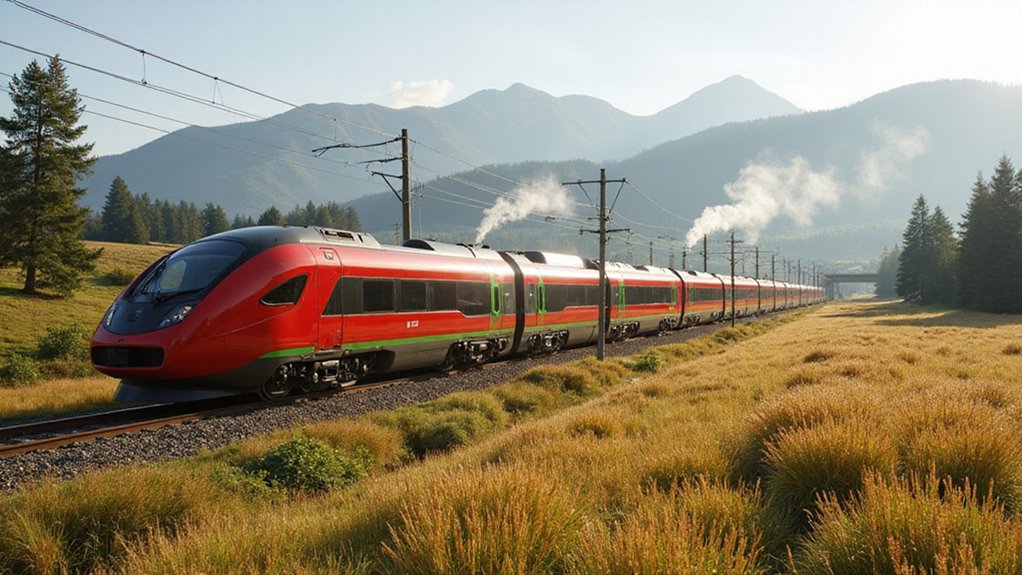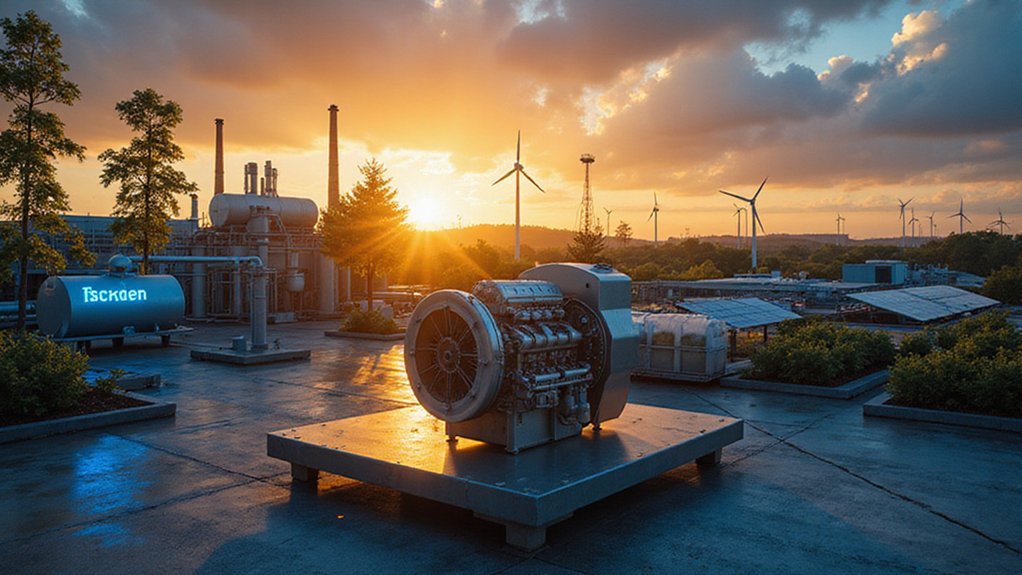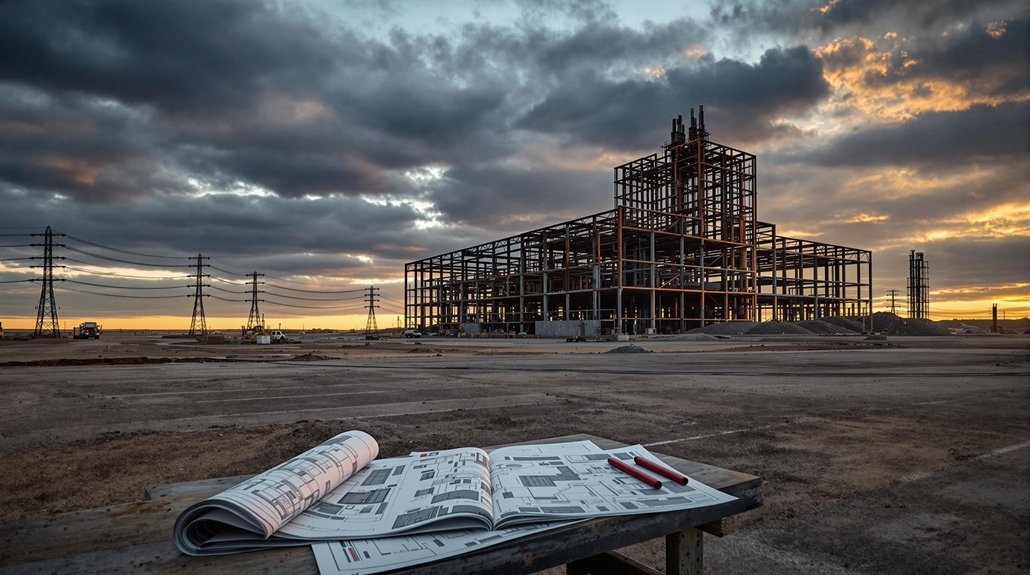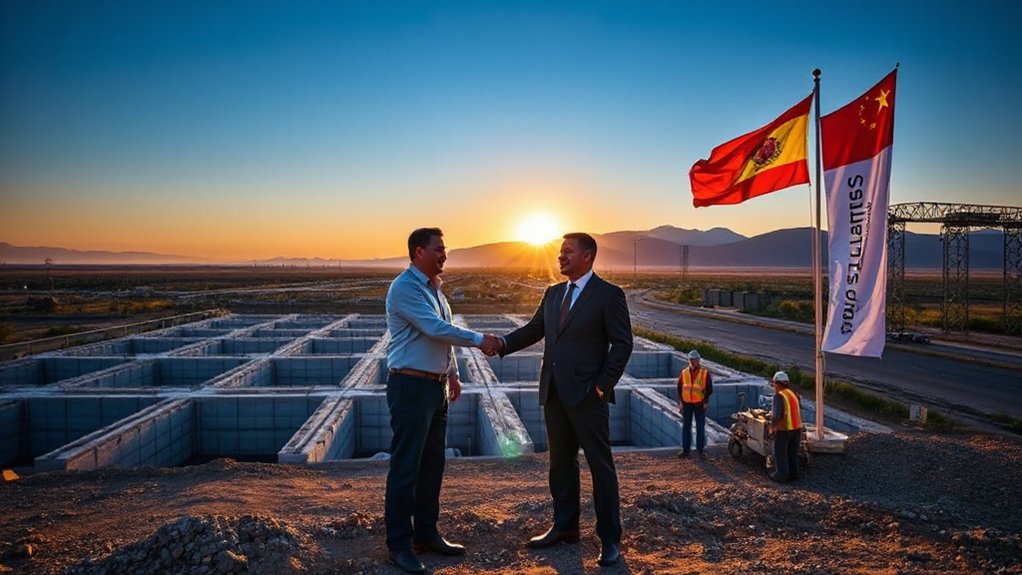Bavaria’s launching a green transit makeover in 2026. Three hydrogen-powered Mireo Plus H trains will replace diesel locomotives on the Mühldorf–Tüßling–Burghausen line. No more fumes or noise pollution. The trains feature low-floor access, bike storage, and can travel 1,200 km on a single tank. Bavaria’s positioning itself as Europe’s clean rail leader. Who knew trains could be this cool without belching black smoke?
A winds of change are blowing through Bavaria’s rail network. Three hydrogen-powered Mireo Plus H trains will soon replace the rumbling, smoke-belching diesel units currently chugging around the Mühldorf hub. The switch happens in late 2026. No more diesel fumes. No more unnecessary noise. Just clean, efficient transportation across eight stations on the 32.3 km Mühldorf–Tüßling–Burghausen line.
Siemens Mobility is handling the manufacturing. They’re not new to this game—it’s their second hydrogen train deployment in Germany. The trains will be painted in Deutsche Bahn’s signature red with flashy green sections. Subtle? Hardly. They want everyone to know these trains aren’t killing the planet.
The environmental impact is significant. Diesel trains? Gone. CO₂ emissions? Slashed. The hydrogen will come from an electrolysis plant right in Mühldorf, powered entirely by green electricity. Bavaria isn’t messing around with its climate goals.
Climate revolution on rails—Bavaria powers forward with zero-emission trains, leaving diesel’s dirty legacy behind.
These aren’t bare-bones replacements either. The new trains feature low-floor access for people who can’t climb stairs. Space for nine bicycles per unit. Even the windows are special—they’re “high-frequency-permeable” so passengers can actually use their phones. Groundbreaking concept, right?
Deutsche Bahn is investing in the hydrogen infrastructure while Siemens will provide maintenance through their service contract. The whole system integrates the latest ETCS safety standards. Each train’s single tank capacity allows for impressive travel distances of up to 1,200 km before needing to refuel. Safe, clean, and modern.
For passengers, the experience will improve dramatically. Quieter rides. No diesel smell. Better connectivity. With a maximum speed of 140km/h and impressive acceleration capabilities, these trains will ensure efficient service throughout the route. Like geothermal energy with its 95% availability factor, these hydrogen trains offer remarkable reliability regardless of weather conditions. It’s part of Bavaria’s ambitious plan to eventually kick all diesel trains out of regional service. They’re positioning themselves as the trendsetters of European rail travel.
The project represents the growing shift toward zero-emission transportation across Germany and the EU. Bavaria’s taking the lead, but others will follow. These hydrogen trains aren’t just replacements—they’re the future of regional rail. Efficient, clean, and long-range. Diesel’s days are numbered.
References
- https://www.railway-technology.com/news/siemens-bavarian-rail-network/
- https://www.railwaypro.com/wp/siemens-begins-production-of-hydrogen-trains-for-bavaria/
- https://www.railway.supply/en/hydrogen-trains-by-siemens-to-start-operating-in-bavaria/
- https://railcolornews.com/2025/04/28/free-passenger-siemens-hydrogen-trains-for-muhldorf/
- https://www.marketscreener.com/quote/stock/SIEMENS-ENERGY-AG-113013151/news/Siemens-order-for-Mireo-Plus-H-trains-in-Bavaria-49738694/









